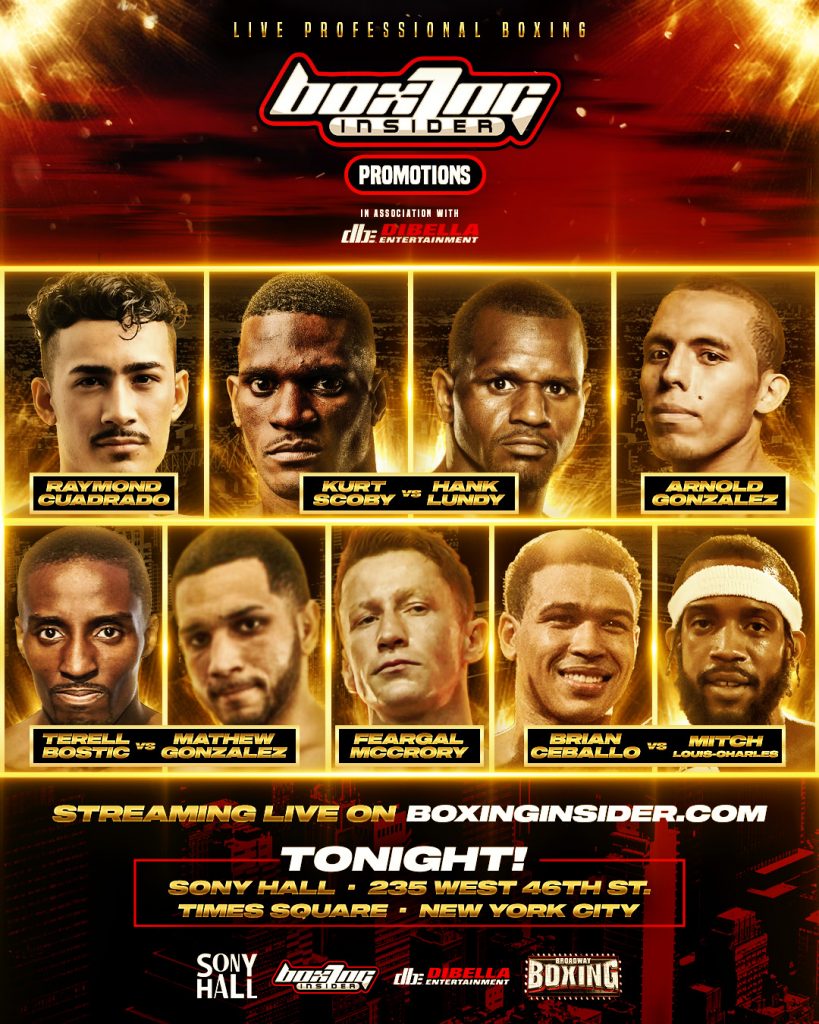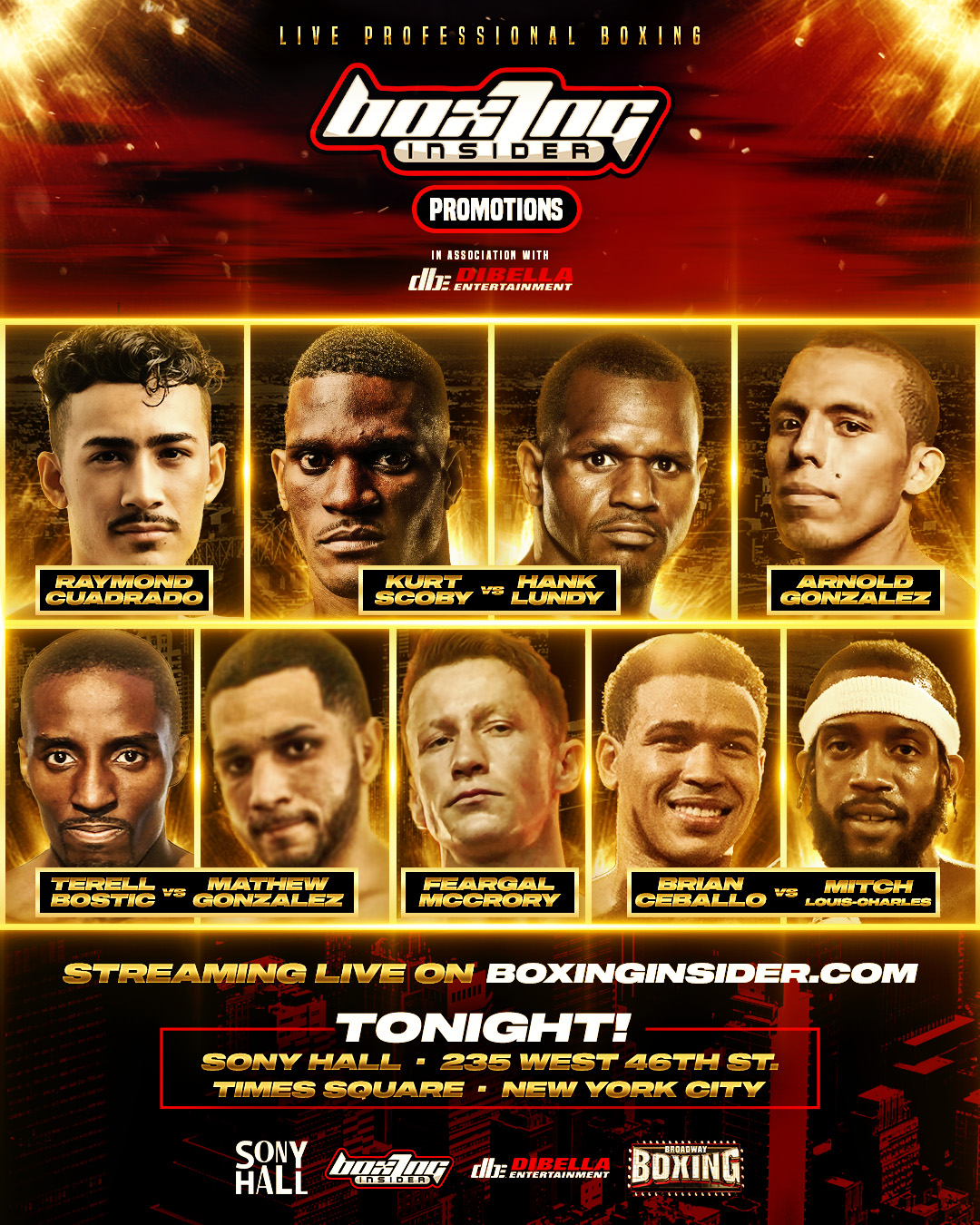Posted on 06/29/2023
Once upon a time, when boxing captivated a much larger segment of the country, the boxing scene in New York City thrived as a vibrant and electrifying atmosphere that enchanted both ardent sports fans and the general public alike. This was, for the most part, in an era when football, basketball and hockey had not made enough significant inroads to dislodge boxing from its place right near the top.

It was the 1930s, 40s and 50s. And a seat at the fights was the hottest ticket in town.
During this particular time, the city itself boasted a remarkable variety of fight venues, each with its own unique charm and history. Of course, some of them were decidedly “major league.”
Madison Square Garden, located in midtown Manhattan, was undeniably the crown jewel of boxing arenas. It stood as the epitome of grandeur and hosted some of the most monumental bouts of the time, becoming synonymous with the sport itself. The Garden, as it was affectionately known, was at that time located on Eighth Avenue, between 49th and 50th Street.
But Madison Square Garden was not the only venue for big-time boxing in New York City. The city also humming elsewhere. The Polo Grounds, the renowned baseball stadium in upper Manhattan, occasionally transformed into a boxing arena, welcoming thousands of fans to witness epic battles within its hallowed grounds. Many, many championship fights were held there. It goes without saying that Yankee Stadium, on occasion, had the world’s attention for a championship fight.
However, there were also a lot of “clubs” which featured locals, in addition to the occasional world-class contender. St. Nicholas Arena, nestled in the heart of Harlem, emerged as a prominent venue, attracting a vibrant community and showcasing local talent in electrifying matchups.
In point of fact, a multitude of smaller, more intimate venues peppered the city, satisfying the appetite fans had for boxing. Legendary halls like the New York Hippodrome, Ridgewood Grove Arena and Sunnyside Gardens in Queens, the Bronx Coliseum, Harlem’s Star Casino, and the Fugazy Bowl in Coney Island all staged compelling events over those decades.
Then there was the Eastern Parkway Arena (the site of Joey Maxim’s victory over a young Floyd Patterson), where Hall of Famer Teddy Brenner was the matchmaker.
Aside from this, any number of armories around the city held boxing shows. When television started to emerge, some of those places had televised events spread across the major networks. And naturally, radio was a key player as well.
The frequency of boxing shows during this era was nothing short of staggering. At one point there were as many as fourteen fight clubs operating on a regular or semi-regular basis. It was not uncommon for several shows to take place on the same night, as the New York State Athletic Commission was one busy governing body. The commission was so prominent that in this era that preceded multiple sanctioning organizations, the fighters they recognized as champions received universal acclaim.
Yes, boxing was king in the Big Apple. But what happened?
Well, many things factored into it.
One of them was the migration out of the city and into the suburbs, which started to take place gradually shortly after World War II. There simply weren’t as many fans who could take a cab or hop on a subway and get to the fights, and parking at many of these venues was limited. Another was the rise of television, which brought a world of visual entertainment into everyone’s living room, at a minimal cost.
The television era also brought fights that were televised. So fans did not have to leave their homes to see some of the sport’s brightest stars. And there was competition emerging from other sports like football and basketball, which were starting to occupy a more prominent place in the landscape – with the help of television revenue.
So the clubs – and their place in New York City boxing – gradually disappeared.
The effect was that there weren’t as many opportunities for fighters to develop their careers. And that simply hurt the sport – and the business.
These days, it’s a whole new ballgame, with a different look.
There is plenty of championship action at the Garden and the Barclays Center in Brooklyn. However, putting on club shows – the ones that serves the grass roots – is more difficult than ever. But there is a need. And currently the organization that is filling that need is Boxing Insider Promotions, headed up by Larry Goldberg, a native of the Atlantic City area who now lives in Manhattan.
After moving to New York, Goldberg, who was operating his Boxing Insider news site, started to do some boxing of his own, training at the Mendez Gym in the city. And what he noticed was that a lot of local fighters simply did not have an outlet in the area to play their trade, because not enough promoters were active.
In a metropolitan area of more than 20 million people, that represented an opportunity. And Goldberg found a venue that was to his liking – Sony Hall, which is located in the Times Square area.
Goldberg got his feet wet by doing an amateur show last August, then made the decision to progress into pro boxing in order to provide a comeback fight for Heather Hardy. He’s been doing his shows regularly ever since, with a series of dates booked at Sony Hall.
Although some competitors with a national presence have found their way onto the Boxing Insider shows, Goldberg’s principal objective is “to put on local shows with local talent,” and he’s had some of the best talent in the area in the Sony Hall ring. By and large, they are bring a nice following with them; friends, fans and family who don’t have to travel very far. Occasionally there’s a neighborhood dispute to be settled between people from rival gyms, as was the case on April 27, when Sydney Maccow and Christian Otero battled in a very lively six-rounder.
There are different story lines that come to life on each show. And Boxing Insider Promotions is establishing a reputation for consistency, which is important.
And suddenly Larry Goldberg is the busiest NYC-based promoter in the largest city in the United States – one with the grandest boxing legacy.
While he was offering some commentary on the April 27 show, Hall of Fame promoter Lou DiBella, a frequent collaborator of Goldberg’s, explained that while producing club shows in New York was very expensive, “if we don’t do it, the sport’s going to suffer. Club boxing is the heart and soul of New York boxing.
“I’m happy to help him out. I’m happy to put fighters on his (Larry’s) cards, because he’s doing it the right way.”
Tickets for the June 29 show are priced at $95, $125, $200 and $325 and are available through TicketWeb. For information about tables, contact [email protected]. Doors open at 6:30 PM, with first bell slated for 7:30 PM.
Established in 1997 as a premier boxing news and information destination, Boxing Insider has, over the course of the last ten months, transitioned into the promotional business. This will be Boxing Insider’s fifth professional boxing promotion.
Sony Hall is located at 235 W 46th St. in Manhattan, at the bottom of the Paramount Hotel, directly across from the Imperial Theater.
This event will stream free of charge on BoxingInsider.com.
